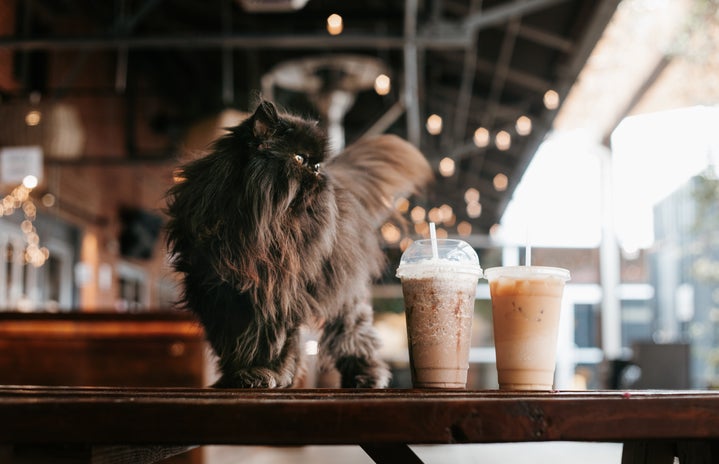The worst feeling in the world is when you spend time waiting for coffee to brew, adding your milk, flavors, and ice, just to make an iced coffee that you take two sips of before deciding it’s too gross to finish. We’ve all been there. It’s hard trying to replicate your favorite Starbucks, Dunkin, or Dutch Bros coffee. When it comes to making coffee at home, the most common struggle I see is with the brewing process of the actual coffee. Here’s how I make the best cold brew at home, from an ex-barista.
The main difference between cold brew and iced coffee is the brewing method. Iced coffee is typically brewed hot then pouring the coffee over ice, making it very easy to water down your coffee and ruin it. My preferred method to make coffee is cold brew.
Cold brew, however, does take a little bit of preparation. The brewing time is anywhere from 12 to 46 hours, so not as instantaneous as brewing coffee hot the morning of. Despite this, cold brew is much easier to make and, depending on the the jar you use to brew, can make enough cold brew to last all week. You can use just about any cold brew maker, as long as it has the basic form of a bigger jar with a filter that sits inside of the bigger jar. I personally use the Cold Brew Mason Jar by County Line Kitchen (around 33 dollars on Amazon), but pretty much any cold brewer will work!
The actual brewing process may vary a little from my process depending on what type of cold brewer you have. For the brewer I have, I typically fill up the jar about ¾ of the way full with warm water. Then I fill up the metal filter with my preferred coffee grounds, then place the filter into the jar. The most important step is to fill up the jar the rest of the way with water, by pouring water directly onto the coffee grounds in the filter basket (or as best as you can depending on your cold brewer). Making sure that the majority of the coffee grounds are soaked is essential to getting strong cold brew concentrate. And finally, I set my cold brewer in the fridge to brew, typically I try to make sure it brews for at least 20 hours.
Now that you have your cold brew concentrate, assembling your iced coffee is totally up to your preferences. If you feel like your cold brew is too strong, adding a little bit of water to dilute it is totally okay! Personally, I use protein shakes as creamer in my coffee, that way I am still getting my morning coffee and protein in at once. My go-to fall coffee has been cold brew and chai protein shakes.
If you’ve been struggling with learning how to make coffee at home, I hope this breakdown of the cold brewing process has helped you find your new favorite way to make coffee.


